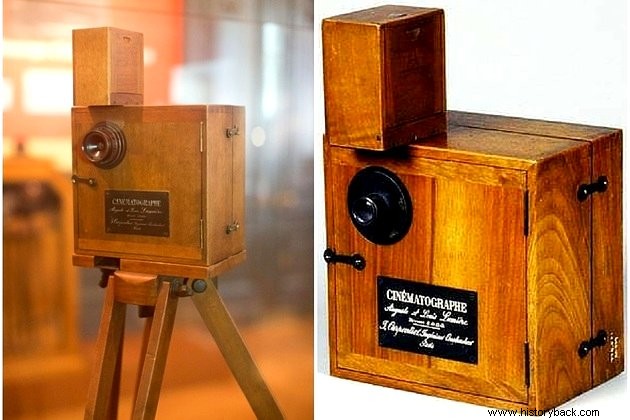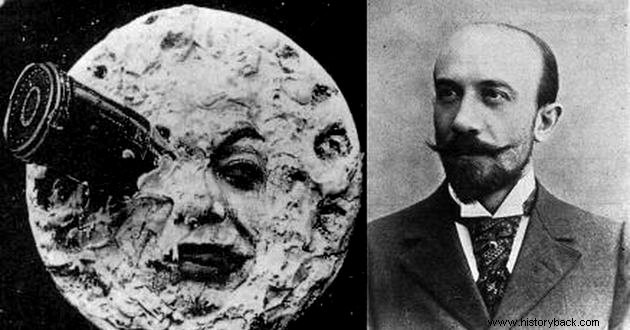On December 28, 1895 , French brothers Auguste and Louis Lumière, held the first public cinema exhibition .
However, the creation of cinema was the result of the efforts of several inventors who worked to capture moving images.
Origin of Cinema
Getting moving images has been pursued since antiquity. Shadows have always fascinated human beings, which even led to the creation of shadow theater.
With the advent of photography it was possible to fix the image on a surface, be it paper, metal plate or glass. In this way, we cannot understand the history of cinema without understanding the history of photography.
The very etymology of the word cinema explains this. After all, "cinema" is short for cinematograph. "Cine" , comes from the Greek and means movement and the suffix "agraph" , here means, record. So we have the movement recorded.
Therefore, several inventors, from countries such as France and the United States, developed devices to capture and project moving images. Let's look at some of these machines:
Magic Lantern

Invented in the 17th century, it was a camera obscura that projected, through lenses and light, hand-painted designs on glass. A narrator was in charge of telling the story and sometimes there was musical accompaniment.
The magic lantern has become a major attraction at urban fairs, but has also been used in academia.
Praxinoscope

Built in 1877 by Frenchman Charles Émile Reynaud (1844-1918), the praxinoscope consisted of a circular-shaped device in which the images were successive and gave the sensation that they were moving.
Initially restricted to the domestic environment, Reynaud managed to increase the size of his machine in 1888. This made it possible to design the drawings for larger audiences and these performances became known as "optical theater".
These projections achieved enormous success in the late 19th century. In fact, the praxinoscope was only surpassed by the Lumière brothers' cinematograph.
Kinetoscope

Launched in 1894 at the factory commanded by Thomas Edison (1847-1931) in the United States, the kinetoscope was an individual machine for watching short films
The invention was only possible because Edison created a celluloid film capable of storing images and thus projecting them through the lens.
See also:Thomas EdisonCinematograph

The brothers Auguste Lumière (1862-1954) and Louis Lumière (1864-1948), passionate about inventions and photography, developed the cinematograph. Unlike other devices, this one allowed recording and projecting images, making the activity more practical.
Both were aware of Thomas Edison's findings and made minor changes to the frames to avoid legal issues.
In this way, the French brothers' invention outperformed its competitors and became the preferred device for those who wanted to record moving images.
First Cinematic Screening
The Lumière brothers were the sons of a photographic materials manufacturer, whose factory was located in the city of Lyon, France.
They researched and perfected the first cameras, contributing to the emergence of color photography. Through the cinematograph, they began to make their first films that consisted of capturing images with the device stopped.
On December 28, 1895, in Paris, at the "Grand Café", the first cinematographic projection as we know it was held. Thus, in a dark room, ten short films such as "The arrival of the train at La Ciotat station" were shown or "The workers leave the factory".
Workers Leaving the Lumière Factory 1895 La Sortie de l'usine Lumière à LyonHowever, the Lumière brothers themselves did not pursue their career in cinema. Louis would still invent the photorama and devote himself to science, while Auguste would continue his studies of biochemistry and physiology.
Narrative Cinema
Cinema was seen only for documentary purposes and to record through a static camera something that was happening in front of the lens. It would be what is called a "filmed theater".
However, two pioneers will use cameras to tell stories, create techniques and narratives that would only be possible with this device.
We highlight two precursors of narrative cinema:Alice Guy-Blaché and Georges Méliès.
Alice Guy-Blache

The first person to explore the narrative path of cinema was the French Alice Guy-Blaché (1873-1968). Author of almost a thousand works, she made the first film based on a popular tale, "The Cabbage Fairy" (1896).
Alice Guy was working as a secretary at the Gaumont factory and film production company when the Lumière brothers went to do a demonstration of her recent invention.
Enchanted with the device, Alice Guy began to experiment with filming with double exposure, delaying or speeding up the camera speed in order to achieve interesting effects to narrate her stories. She would still be the first to use color and sound in her movies.
She married Herbert Blaché in 1907, who worked as a cameraman. Both moved to the United States three years later and there Alice Guy created her own production company and built studios to film her works. After getting divorced in 1920, she returns to France, but is unable to resume her directing career.
Alice Guy has made over a thousand films of which only 350 have survived, including her monumental "The Life of Christ" , from 1906, which had 300 extras.
Completely erased from the history of cinema, Alice Guy-Blaché died in 1968. Now, historians are giving her the place she deserves once again.
Georges Méliès

On the other hand, the French magician and actor Georges Méliès would also work on the development of cinematographic language introducing cuts, overexposure and zoom.
Born in Paris in 1861, Georges Méliès ran his own theater in the French capital and was invited by the Lumière brothers to attend the exhibition of the "cinematographer" in 1895.
Méliès wanted to use the device in his shows, but the brothers did not sell it. Anyway, he bought a similar machine and started writing screenplays and acting. He perfected the tricks of theater and illusion for the cinema and thus achieved great success.
His greatest success was the film "Trip to the Moon" , of 1902, where he adapted the famous work of Jules Verne for the cinema. For his innovations, Méliès is recognized as the "father of special effects".
Curiosities
- The first cinema in the world was the Éden Théâtre, in the city of La Ciotat, France, where the Lumière brothers used to spend their holidays and screened their films for guests.
- Six months after the exhibition in Paris, on July 8, 1896, the first film screening in Brazil takes place, in Rio de Janeiro.
Read more :
- History of Brazilian Cinema
- What are Visual Arts?
- Types of Art
- Media
- Photorealism
- History of Television
- Modern Times, a film by Charles Chaplin
